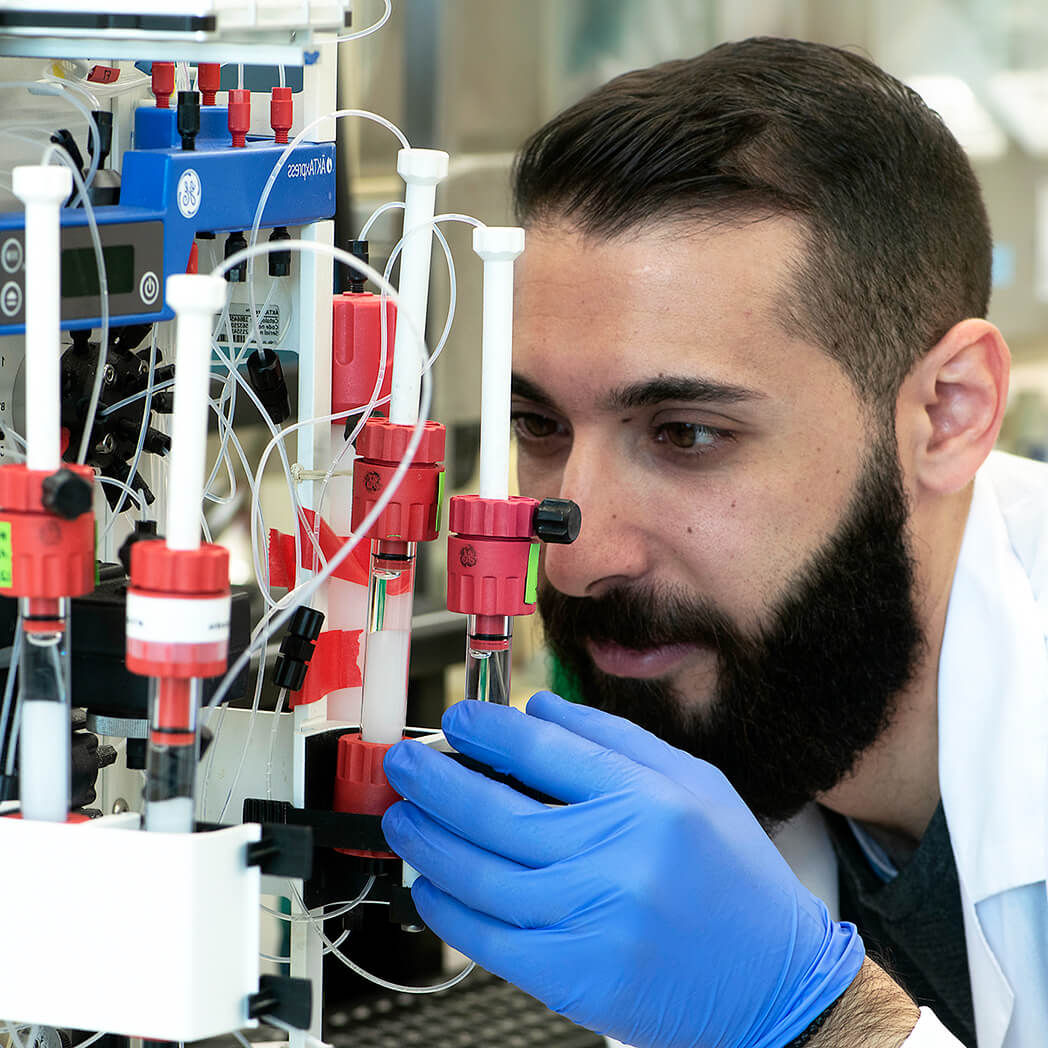Overview
Cat #:
APC-158
Host: Rabbit
Type: Polyclonal
Form: Lyophilized
Applications: WB
Reactivity: M, R
Alternative Name Potassium channel subfamily K member 15, Acid-sensitive K+ channel protein TASK-5, TWIK-related acid-sensitive K+ channel 5, K2P15.1
Accession (Uniprot) Number Q8R5I0
Gene ID 156873
Application key:
CBE- Cell-based ELISA, FC- Flow cytometry, ICC- Immunocytochemistry, IE- Indirect ELISA, IF- Immunofluorescence, IFC- Indirect flow cytometry, IHC- Immunohistochemistry, IP- Immunoprecipitation, LCI- Live cell imaging, N- Neutralization, WB- Western blot
Species reactivity key:
H- Human, M- Mouse, R- Rat
For research purposes only, not for human use
Specifications
Properties
Immunogen
- Peptide (C)RKRGEFRRKYRFSAD, corresponding to amino acid residues 43-57 of rat KCNK15 (Accession Q8R5I0). 1st extracellular loop.
Homology Mouse – identical.
RRID AB_2756747.
Purity Affinity purified on immobilized antigen.
Form Lyophilized powder. Reconstituted antibody contains phosphate buffered saline (PBS), pH 7.4, 1% BSA, 0.05% NaN3.
Form Lyophilized powder. Reconstituted antibody contains phosphate buffered saline (PBS), pH 7.4.
Isotype Rabbit IgG.
Specificity Not recommended for human samples
Standard quality control of each lot Western blot analysis.
Peptide confirmation Confirmed by amino acid analysis and mass spectrometry.
Storage before reconstitution The antibody ships as a lyophilized powder at room temperature. Upon arrival, it should be stored at -20°C.
Reconstitution 25 μl, 50 μl or 0.2 ml double distilled water (DDW), depending on the sample size.
Reconstitution 0.2 ml double distilled water (DDW).
Antibody concentration after reconstitution 0.8 mg/ml.
Storage after reconstitution The reconstituted solution can be stored at 4°C for up to 1 week. For longer periods, small aliquots should be stored at -20°C. Avoid multiple freezing and thawing. Centrifuge all antibody preparations before use (10000 x g 5 min).
Applications
Applications
Western blot
- Rat and mouse brain lysates (1:200-1:1000).
 Western blot analysis of mouse brain lysates (lanes 1 and 3) and rat brain lysates (lanes 2 and 4):1,2. Anti-KCNK15 (TASK-5) (extracellular) Antibody (#APC-158), (1:200).
Western blot analysis of mouse brain lysates (lanes 1 and 3) and rat brain lysates (lanes 2 and 4):1,2. Anti-KCNK15 (TASK-5) (extracellular) Antibody (#APC-158), (1:200).
3,4. Anti-KCNK15 (TASK-5) (extracellular) Antibody, preincubated with KCNK15/TASK-5 (extracellular) Blocking Peptide (#BLP-PC158).
Scientific Background
Scientific Background
Scientific background
TASK1-5 are members of the two-pore domain K+ channels. They have four transmembrane domains and assist in setting the resting membrane potential.
TASK5 (K2P15.1, KCNK15) was identified using the TASK-3 sequence in a GenBank search. However, when expressed in COS-7 cells, it does not form a functional K+ current1.
The channel is distributed in the brain, heart, lung, kidney, liver, pancreas, adrenal gland and placenta2.
Last Update: 25/03/2025
